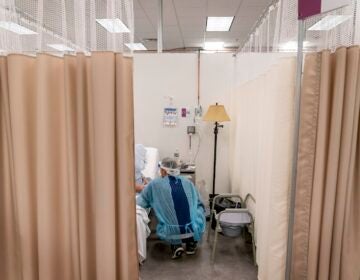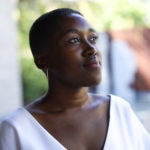'We had just come through an awful year': The acute stress of 9/11 led to increased preterm birth rates for Arab women
Research has shown a link between exposure to racism and birth outcomes. The terror attacks offered a unique window on the effects of anti-Arab racism.
Listen 08:53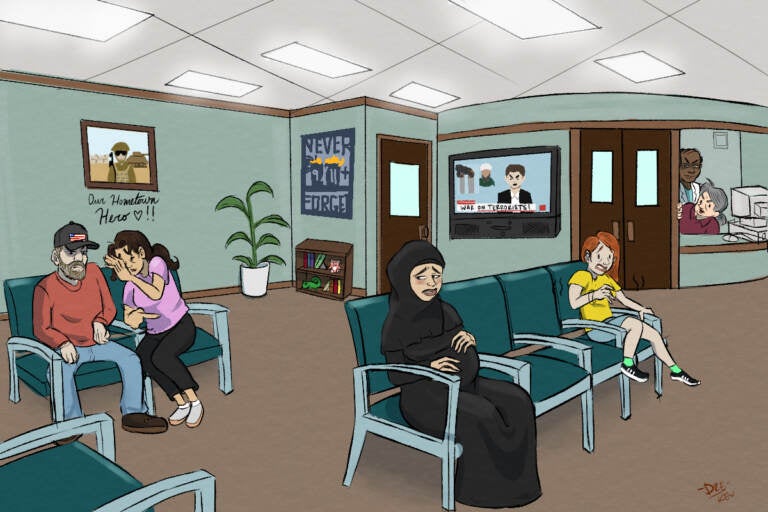
Research has shown a link between exposure to racism and birth outcomes. The terror attacks offered a unique window on the effects of anti-Arab racism. (Illustration by Andre Reed)
This story is from The Pulse, a weekly health and science podcast.
Subscribe on Apple Podcasts, Spotify or wherever you get your podcasts.
When Dr. Leila Hajjar arrived at her clinic on Sept. 11, 2001, it was chaos. She remembers parking her car in the clinic’s lot while she was listening to the BBC.
“And [the reporter] said that the first attack happened and he thought it was an air accident,” said Hajjar, an OB-GYN and the president of the National Arab American Medical Association’s Michigan chapter. “And then he said, ‘Oh, my God, this is a second plane.’”
When she finally walked into her clinic, Hajjar said, everyone was in a panic as they watched the 9/11 attacks unfold on TV. The realization that these were terror attacks resonated in a different way for her patients. Hajjar serves a large Arab community in Detroit, and soon after the news of the attacks spread, she and her colleagues received a slew of phone calls from distressed Arab patients.
“And many of them were … crying when they found out that it was Arabic terrorists,” Hajjar said. “So after the initial guilt and sadness, there was a lot of fear and there was a lot of worry about people’s own safety and that of their family.”
And Hajjar could relate. She had immigrated to the United States from Lebanon in the mid-1980s to study medicine and settled in Michigan, which has one of the largest concentrations of Arab Americans in the country.
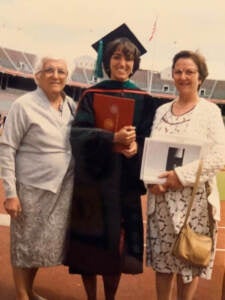
In the weeks after the 9/11 attacks, people who were perceived to be Arabs were the target of increased harassment, violence, and workplace discrimination.
In October 2001, the Arab American Institute took a national poll of over 500 Arab Americans. Nearly half of the respondents said they knew of someone of Arab descent who had experienced discrimination since the attack, and 20% had personally experienced discrimination themselves.
This heightened moment of fear and violence showed up in her clinic, Hajjar said. She remembers several incidents with Muslim patients who were dressed in headscarves and overheard people at the clinic making comments about their clothing and staring
And, according to Hajjar, tensions between Arab patients and staff were at an all-time high.
“Patients felt that they were treated differently in the delivery room when they went to deliver than if they had not been Arabs, that things weren’t explained to them as well, they weren’t treated as nicely,” Hajjar said.
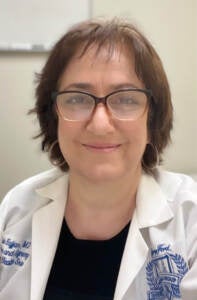
As the stress mounted in Hajjar’s Detroit clinic, so did the stress-related illness among the Arab women she was working with. She remembers seeing more women coming into the clinic with issues such as preterm contractions, hypertension, and sometimes even preterm death. So she started to wonder what impact this stress would have on birth outcomes for her Arab patients.
Diane Lauderdale, a health researcher at the University of Chicago, had the same question.
Lauderdale is an epidemiologist whose research examines how behavioral and social factors influence health. Back in 2002, she was reviewing some 19th-century data from Europe in historical demography about particularly bad years — years when there was an epidemic or a famine. And those studies examined the records of people who were born in those years but had survived, to understand their lifelong health outcomes.
The researchers looked at how long people lived, and, for some of the men in the sample, they analyzed military conscription records to see how tall they were. Lauderdale said they repeatedly found that there were lifelong effects of having been born in a really bad year, when, presumably, their mothers may have been at an increased risk of having a disease or having a lot of stress because it was a particularly difficult time.
“I was reviewing these studies in 2002, and I just thought about the fact that we had just come through an awful year,” Lauderdale said. “And then it occurred to me that it was particularly awful for Arab Americans … And I thought this was a unique opportunity to get some kind of evidence about racism and birth outcomes.”

Later in 2002, Lauderdale turned her attention to California, a huge and diverse state with the largest Arab population in the country. She requested every birth certificate from the state dated from 2000 to 2002. But there was one issue: Unlike the Hispanic, Black, and Asian race categories, there isn’t widespread use of an Arab ethnicity category in most health systems. The U.S. Census classifies people with North African and Middle Eastern ancestry as white.
A lot of the health data that we have … [doesn’t include] a whole lot about the ethnicity and the race of the patients when they’re Arabs,” said Hajjar, the OB-GYN in Michigan. “Now, in my own electronic medical system, we do have a category for Middle Eastern, but this isn’t consistent. And so if you’re trying to look at [health] data, it is sometimes a little bit limited.”
For this exact reason, Lauderdale had previously worked with the Social Security Administration to develop distinctive name lists for specific Asian ethnic groups as well as Arab Americans, in order to do demographic and epidemiological research in data sources that didn’t have that level of detail. And to identify Arab women in the California dataset, she requested that the state release the names of the mothers and children on those documents, which typically isn’t allowed without special approval. But the state authorized her request, and she used a special Arabic name algorithm from the list created by the Social Security Administration to identify Arab women on the California birth certificates.
Lauderdale looked at data on women across racial and ethnic groups who were pregnant or gave birth in the six months following September 2001, compared with the same six calendar months one year earlier.
She considered such things as the infants’ birth weights and their gestational ages, and she found there were some significant differences.
“The women with distinctive Arabic names had an increased risk of both preterm birth and low birth weight babies compared to very similar women who’d given birth a year earlier,” Lauderdale said. “Now, of course, 9/11 was stressful for everybody in the country, but it was not an effect that was seen in any other group of women who are similarly compared in the same two time periods.”
In other words, there was no increased risk observed across all women, or even all foreign-born women in California. And Lauderdale said the risk of low birth weight was greater among Arabic-named women whose infants had ethnically distinctive given names as well, which she thinks could be suggestive of a stronger ethnic identification among those mothers.
“Whether this was because they were more recent immigrants, whether it meant that the baby’s father was also an Arabic-origin person, whether it meant that they were more likely to be Muslim as opposed to Christian, it’s unclear,” Lauderdale said. “But it does indicate in some way a stronger ethnic identity, that perhaps the women themselves were more likely to have dressed in a way that was visibly Muslim. And so they were experiencing and more afraid of discrimination and violence in this period.”
Subscribe to The Pulse
Lauderdale said her findings were in line with the growing research that showed links between ethnicity-related stress during pregnancy and increases in the risk of preterm birth. There was a physiological mechanism health researchers were paying more attention to at the time called corticotropin-releasing hormone (CRH). She said the hormone helped explain associations between exposure to discrimination and maternal stress responses in the body.
CRH is released in the uterus in response to the fetus being in stress. In some studies, researchers have found that when the level of CRH is measured in pregnant women, the values in the second trimester are linked to probabilities of preterm birth subsequent to that.
Scientists had been interested in the relationship between the stress of racism and pregnancy outcomes — but the typical approach to studying that was limited to interviewing women about their discrimination experiences mid- and post-pregnancy. Typically, researchers would track pregnant women throughout their birthing journeys and look at whether the women who reported more discrimination experiences had higher rates of preterm birth.
“And trying to identify … the mechanism is more difficult if you don’t know whether it’s just a lifetime of material and psychological and social problems or whether it’s actually some more specific, physiologic mechanism that occurs related to stress pathways during pregnancy,” Lauderdale said. “It’s just hard to separate.”
In addition, Lauderdale noted, not all women are equipped to recognize racism and discrimination when it’s happening. Research shows that women with more resources, better education, and more self-confidence are more likely to recognize that something unpleasant or dangerous happening to them is related to how they are being perceived racially.
“And so you might find perverse findings that women, for example, who are better educated are more likely to report discrimination experiences during their pregnancy,” Lauderdale said. “And it is just because that is how they are perceiving them.”
Yet 9/11 provided Lauderdale with a brief and unprecedented research window to observe the impact of anti-Arab violence on a specific and vulnerable population. In research, Lauderdale said, this is referred to as a natural experiment, in which something outside the control of individuals changes their circumstances. This study design has been generalized to other research efforts in the U.S. and around the world, where various kinds of unprecedented and traumatic events happened to specific groups of people.
“For example, there was a very interesting investigation of whether a big crackdown on immigration on illegal immigrants in Iowa was associated with Latinos having an increased preterm birth rate. And there was some evidence it did,” Lauderdale said.
Her study has been important in affirming a link between racism experienced by Black women and their very high preterm birth rates in this country, which have been documented for at least the past 40 years.
More generally, associations between discrimination exposure and poor birth outcomes have been observed for a really long time. But it has not always been clear what doctors can do about it. The acute stress pregnant Arab women dealt with in the weeks and months after 9/11 was only observed approaching delivery or after their babies had been born.
In other words, hospitals and clinics were the last site where this stress played out, but they were not the cause. Lauderdale said it’s hard to know what a doctor or a provider could do to combat social problems outside the medical system.
“Clearly within the medical system, there can be care that women are treated appropriately and equitably, but this was not particularly about discrimination in the health care setting,” Lauderdale said. “And it would be hard for doctors to change society at large. It’s not really a health care problem.”
Despite that, said Hajjar, the OB-GYN in Michigan, in the past 20 years doctors and health systems have been increasingly interested in doing their part.
“We have committees, we have discussions, we have people from the receptionists to the nurses to the physicians trying to find out: What are we lacking here. How can we improve it? How can we fight those biases?”
Support for WHYY’s coverage on health equity issues comes from the Commonwealth Fund.
WHYY is your source for fact-based, in-depth journalism and information. As a nonprofit organization, we rely on financial support from readers like you. Please give today.




